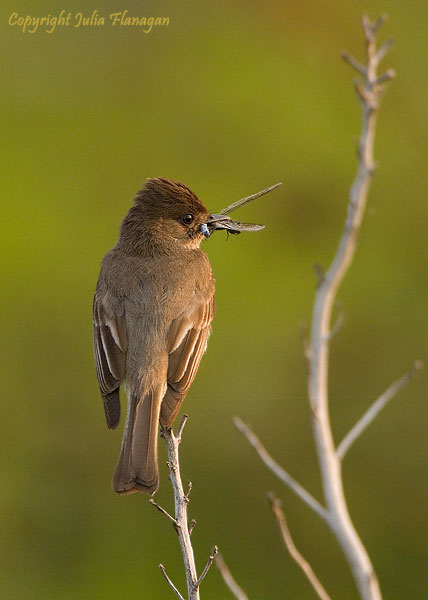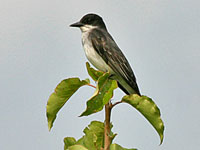
 Video © Eli Hosen
Video © Eli HosenPhotos:
Above © Julia Flanagan
Lower left © Eli Hosen; Occoquan Bay National Wildlife Refuge, Woodbridge, VA; July 2009
Eastern Phoebe The Eastern Phoebe is one of the birds named for its call: fee-bee, fee-bee. Otherwise it is rather inconspicuous, with dark grey- brown plumage above and pale brown to yellowish feathers below. The dark head may appear to have a crest. Not the most common flycatcher in Virginia, it is distinguished from similar species, such as the Wood Peewee, by its lack of distinct white wing bars or a white eye ring. Some other more common flycatchers are greenish-colored above. Also, unlike the more common Peewee, the Phoebe bobs its tail up and down after landing on a perch. The Phoebe lives along forest edges and in river bottoms and open woods near suitable nesting sites, catching flying insects and eating some small fruits. The nest is an open cup cemented with mud to the rock or wall of cliffs, bridges, or building eaves. Its willingness to use houses and other artificial structures makes it more likely to be observed than it would be as a forest inhabitant. The female bird incubates the white eggs and raises the young on her own, sometimes, in fact, chasing the male away. In spring and summer, this bird lives and breeds from central and southeastern Canada south to the central and northeastern US. It migrates to live in winter in the southeastern US and the Gulf coast region of northern Mexico. |
Home | Upcoming Events | About Us | Resource Issues | News | Local Contacts Maps | Photos | Publications | Youth Education | FAQ's | Links | Membership |





